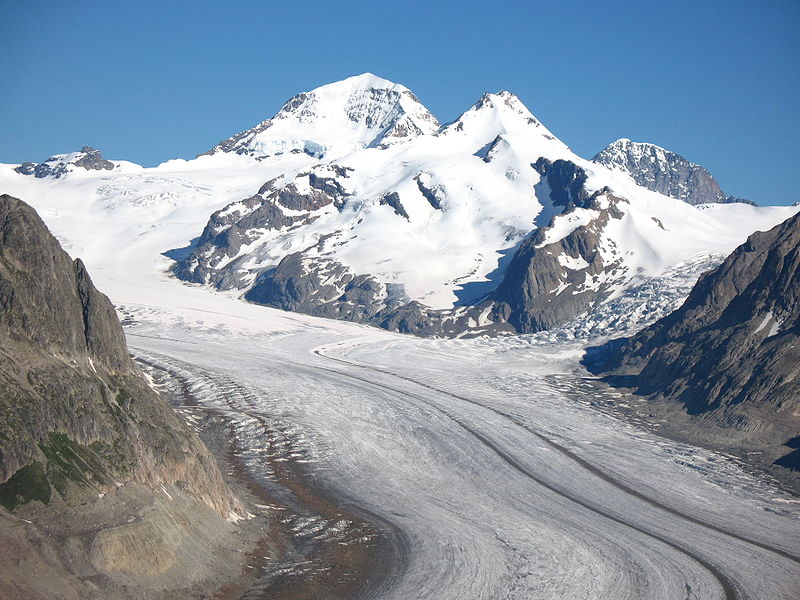The Swiss glaciers lost 12% of their ice volume in a decade. The melting of the glaciers occurred following a consistent rise in temperatures, to the point of real fear that one day the glaciers would disappear altogether

The problem is that until now it has not been given exactly how big the ice layer is in the Alps and the changes that have taken place in it. That's why all the studies were based on estimates, but the development of new models changed the rules of the game and now it is possible to easily and accurately calculate the volume of the ice layers and the changes in volume over the years.
A team of researchers from the Zurich Institute of Technology (ETH) consisting of hydrologists and glaciologists has developed a model to determine the volume of ice in a given glacier. The results of this groundbreaking research were published in the scientific journal "Global and Planetary Change".
The researchers' new model is based on the law of conservation of mass and it states that the mass of a certain substance cannot be created or destroyed out of thin air, but it can change its shape, that is, the mass of the glacier will not change, but as the ice slides, it will change the thickness of the glacier. Hence it is possible to deduce the thickness of the ice layer based on the topography of the surface and the mass distribution of the glacier.
The researchers expand and say that calculating the amount of ice every period is the most important indicator in long-term monitoring of the glaciers and predicting future changes.
The volume of the ice layers - 74 cubic kilometers
The new model was applied in a large-scale field study on the 59 Swiss glaciers larger than 3 square kilometers. Regarding the remaining 1,400 glaciers, an assessment was made using an empirical area-volume approach based on an up-to-date data set. The results of the study show that the volume of the glaciers in 1999 was estimated at 74 cubic kilometers with an accuracy of 9 cubic kilometers.
For comparison, the volume of glaciers totaling 74 cubic kilometers is less than the volume of water in the Geneva River where 89 cubic kilometers of water flow. Since the glaciers are spread over an area of 1,063 square kilometers, the Swiss glaciers have an average thickness of 70 meters.
In addition to the above, the scientists discovered that the 59 largest glaciers in Switzerland are responsible for 88% of the ice volume in the Swiss Alps, while the remaining 24% reside in the Altsch region. The total area of the Altsch glacier is more or less the same as all the Swiss glaciers that are less than one square meter in size, but their total volume is 20 times smaller than the Altsch glacier. According to the researchers, this proves once again that the large glaciers carry the most ice.
Changes over time - a decrease of 12% in a decade
The Swiss research revealed that the ice volume has been alarmingly small since 1999. During the last decade - the warmest decade in Switzerland in 150 years - Switzerland's glaciers lost 9 cubic kilometers of ice (12%). In the record-breaking summer of 2003 alone, the glaciers lost 2.6 cubic kilometers (3.5%).
These numbers are alarming given the fact that the climate continues to change and temperatures continue to climb. According to recent estimates, by 2050 temperatures will rise by 1.8 degrees in winter and 2.7 degrees in summer!

6 תגובות
LAC LEMAN patch!!!
Lake Geneva's name is LAK LEMAN. The name Lake Geneva is an Israeli invention due to lack of knowledge.
I never liked ice on mountains, you can skate.
The reference is yes to the river/Lake Geneva and not to the Heron.
And yes, it is 89 kmXNUMX (kmXNUMX = cubic km).
Geneva River? Maybe you mean the Rhône river?
89 cubic kilometers in how long? Or does it mean that the volume of water throughout the length of the river is 89 kmXNUMX?